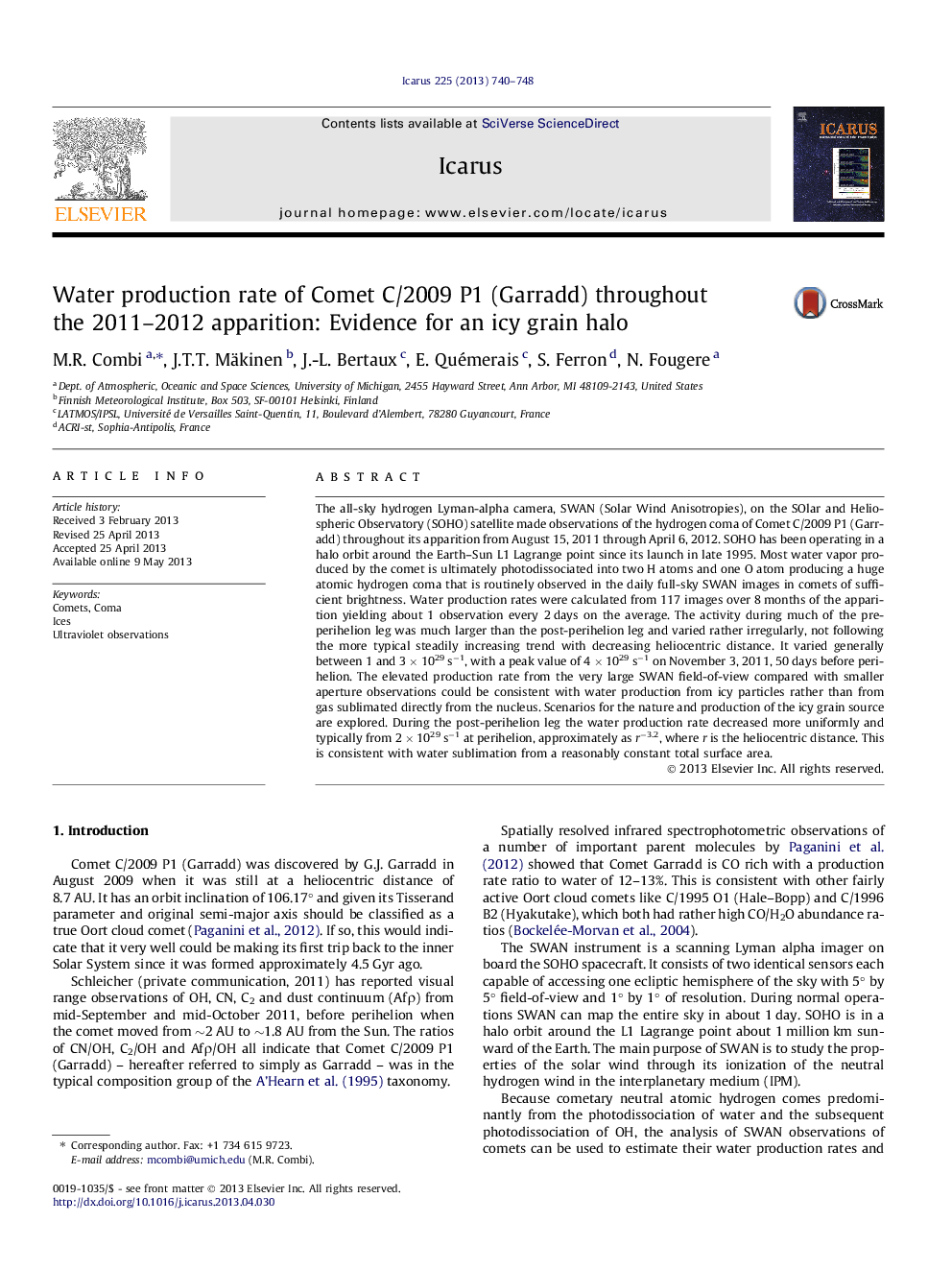| کد مقاله | کد نشریه | سال انتشار | مقاله انگلیسی | نسخه تمام متن |
|---|---|---|---|---|
| 1773240 | 1021122 | 2013 | 9 صفحه PDF | دانلود رایگان |

• Comet C/2009 P1 Garradd was observed in 117 SOHO/SWAN H-Lyα images over 8 months.
• Calculated water production rates monitor the activity over the entire apparition.
• The activity peaked and was generally much higher before perihelion than after.
• After perihelion the activity varied as sublimation from a constant water surface area.
• Substantial pre-perihelion production of H2O from icy grains may be indicated.
The all-sky hydrogen Lyman-alpha camera, SWAN (Solar Wind Anisotropies), on the SOlar and Heliospheric Observatory (SOHO) satellite made observations of the hydrogen coma of Comet C/2009 P1 (Garradd) throughout its apparition from August 15, 2011 through April 6, 2012. SOHO has been operating in a halo orbit around the Earth–Sun L1 Lagrange point since its launch in late 1995. Most water vapor produced by the comet is ultimately photodissociated into two H atoms and one O atom producing a huge atomic hydrogen coma that is routinely observed in the daily full-sky SWAN images in comets of sufficient brightness. Water production rates were calculated from 117 images over 8 months of the apparition yielding about 1 observation every 2 days on the average. The activity during much of the pre-perihelion leg was much larger than the post-perihelion leg and varied rather irregularly, not following the more typical steadily increasing trend with decreasing heliocentric distance. It varied generally between 1 and 3 × 1029 s−1, with a peak value of 4 × 1029 s−1 on November 3, 2011, 50 days before perihelion. The elevated production rate from the very large SWAN field-of-view compared with smaller aperture observations could be consistent with water production from icy particles rather than from gas sublimated directly from the nucleus. Scenarios for the nature and production of the icy grain source are explored. During the post-perihelion leg the water production rate decreased more uniformly and typically from 2 × 1029 s−1 at perihelion, approximately as r−3.2, where r is the heliocentric distance. This is consistent with water sublimation from a reasonably constant total surface area.
Journal: Icarus - Volume 225, Issue 1, July 2013, Pages 740–748